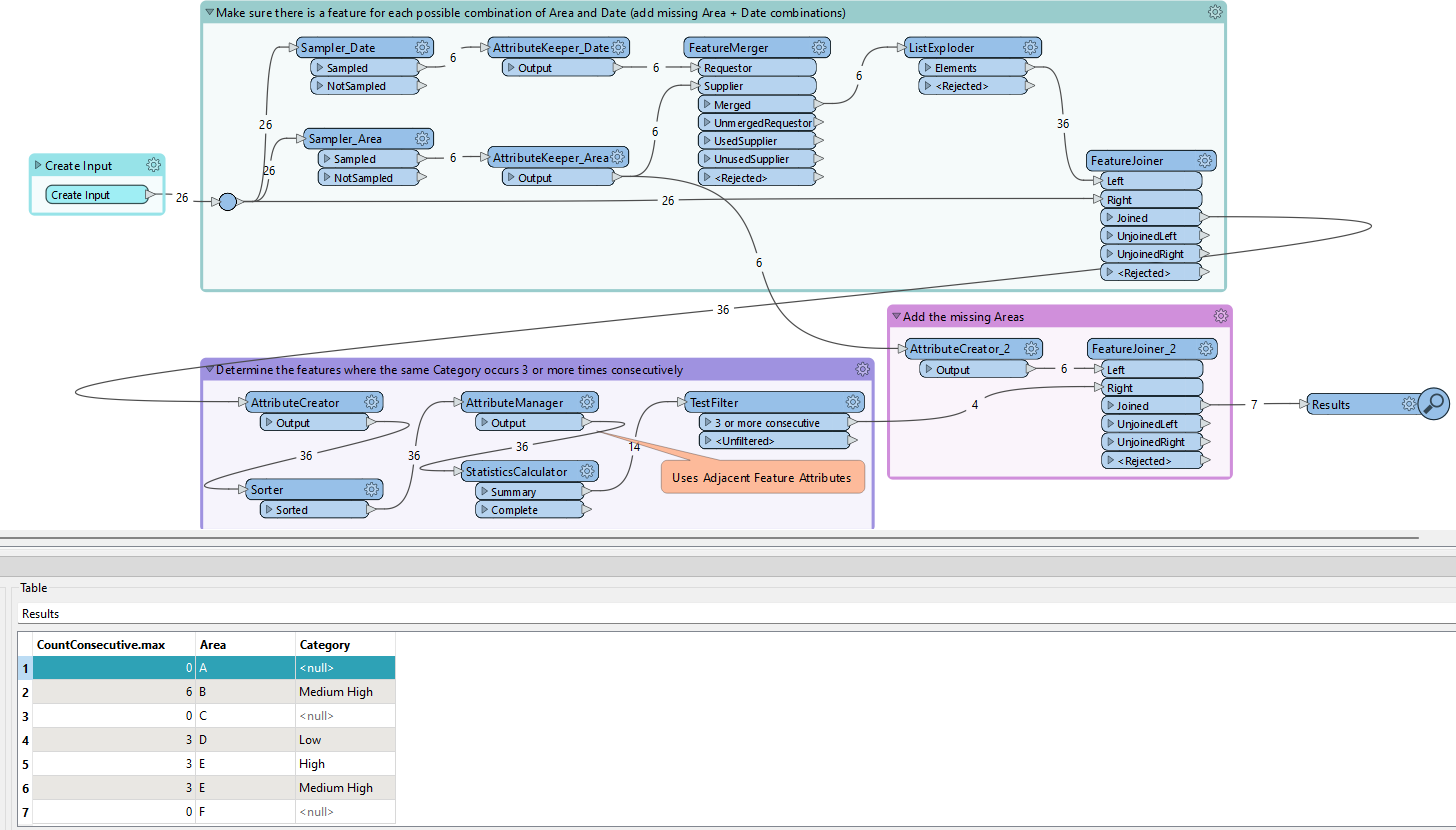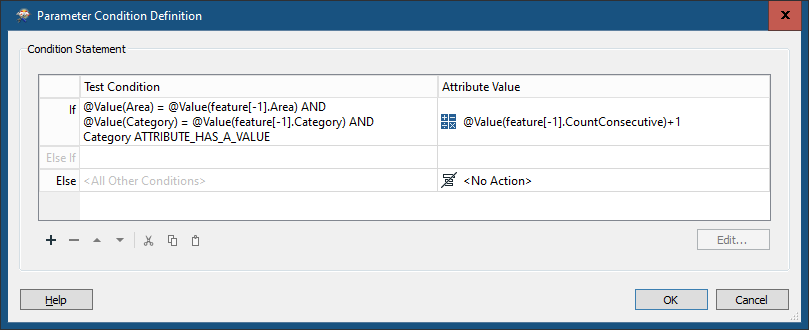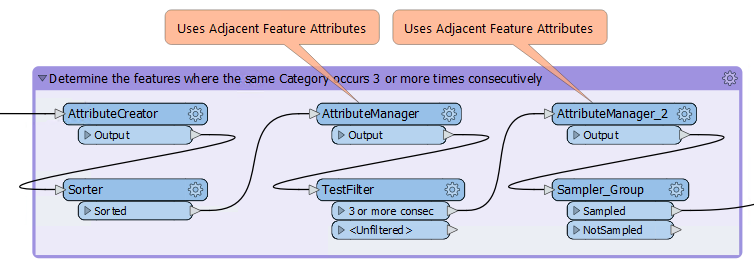Hello,
I have these data
| Area | Category | Date |
| A | Medium | 202301 |
| A | High | 202305 |
| B | Medium High | 202306 |
| B | Medium High | 202305 |
| B | Medium High | 202304 |
| B | Medium High | 202303 |
| B | Medium High | 202302 |
| B | Medium High | 202301 |
| C | Low | 202306 |
| C | Low | 202305 |
| C | Medium | 202304 |
| C | Low | 202303 |
| D | High | 202306 |
| D | Low | 202305 |
| D | Low | 202304 |
| D | Low | 202303 |
| E | High | 202306 |
| E | High | 202305 |
| E | High | 202304 |
| E | Medium High | 202303 |
| E | Medium High | 202302 |
| E | Medium High | 202301 |
I want to count the categories that occurred 3 or more times consecutively per area.
So something like these
| Area | Category | Count Same category consecutively >3 |
| A | 0 | |
| B | Medium High | 6 |
| C | 0 | |
| D | Low | 3 |
| E | High | 3 |
| E | Medium High | 3 |
I am not sure how to do it in FME.
Thank you!

















